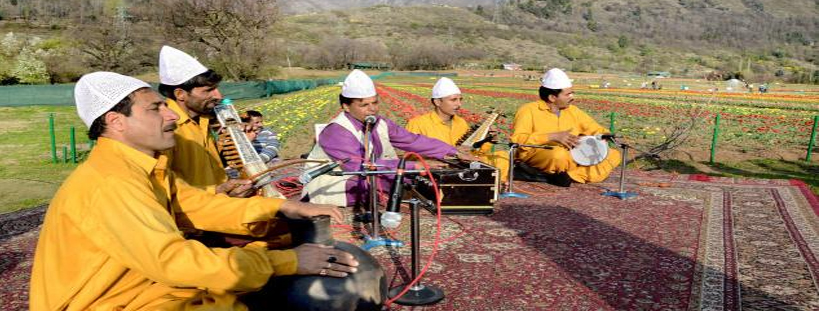
Music adds to the attraction of the Kashmir valley for the tourists. The history and tradition of music and dance in Kashmir valley goes back to thousands years back. Given below are some main forms of the traditional music of Kashmir, along with some Kashmiri folk songs.
Chakri Once performed with the help of only Garaha, Sarangi and Rabab, Chakri has included harmonium also in its presentation. It is one of the most popular forms of the traditional music of Kashmir. Sufiana Music Sofians musiqui (Sufi Music) owes its introduction in Kashmir to Iran. Introduced in the 15th century in the Kashmir valley, Sufiana music continues to enthrall its audience till date. With the passage of time, a number of Indian ragas were added to this music form. This classical music form of Kashmir makes the use of Santoor, Sitar, Kashmiri Saz, Wasool or Tabla. Hafiz Nagma A part of the classical Sufiana Music, Hafiz Nagma makes use of Santoor-a hundred stringed instrument played with sticks. In Hafiz Nagma, there is a female dancer, accompanied by a number of males with instruments. The dancer, known as Hafiza, moves her feet to the musical notes. Song of Habba Khatoon Habba Khatoon was a princess of Kashmir. This song reflects her feelings at the time when she was separated from the Yousuf King. Surma Surma is a song in Dogri that reflects the agony of a newly married girl whose husband is away in the Army.
Kashmiri music reflects the rich musical heritage and cultural legacy of Kashmir. Traditionally the music composed by ethnic Kashmiris has a wide range of musical influences in composition. Due to Kashmir's close proximity to Central Asia, Eastern Asia and Southern Asia, a unique blend of music has evolved encompassing the music of the three regions. But, overall, Kashmiri Valley music is closer to Central Asian music, using traditional Central Asian instruments and musical scales,[1] while music from Jammu is similar to that of North India and Ladakhi music is similar to the music of Tibet.
© Bonjour Media. All Rights Reserved.